
Punk Style
Why do the Punk Style clothes look good?
Punk style clothes look good because they are not bland
They express the spirit of rebellion and the desire to stand
Out from the crowd and the norms of society
They are a way of saying "I am me, and I am free"
Punk style clothes look good because they are not boring
They mix and match different elements without conforming
To the rules of fashion or the expectations of others
They are a way of saying "We are not clones, we are brothers"
Punk style clothes look good because they are not fake
They reflect the personality and the attitude of the wearer
They are a way of saying "I don't care what you think, I'm not here to please you"
They are a way of saying "I'm punk, and I'm proud to be true"
Who can wear the Punk Style garments?
Punk Style garments are not limited to a specific group of people, but rather reflect a rebellious attitude and a DIY aesthetic.
Anyone who wants to express their individuality, creativity, and anti-establishment views can wear punk style garments.
It is not about following rules or trends, but about making your own statement with your clothing and accessories.
You can mix and match different punk subcultures like hardcore punk, skate punk, glam punk, or pop punk, or create your own unique look.
Punk Style is about being yourself and having fun with fashion.
Example of the color palette for the image of Punk Style

See these colors in NCS, PANTONE, RAL palettes...
Are the Punk Style clothing in style?
Punk style clothing is a type of fashion that originated from the punk subculture in the 1970s and has since evolved and diversified over the decades.
Punk style clothing is characterized by its rebellious, anti-establishment, and DIY attitude, often incorporating elements such as leather, spikes, studs, chains, safety pins, patches, ripped fabrics, and tartan.
Punk style clothing is also influenced by other subcultures and genres, such as glam rock, skinheads, greasers, mods, goth, metal, grunge, and emo.
Punk style clothing is still in style today, as it reflects a sense of individuality, creativity, and resistance to mainstream norms.
Punk style clothing can be seen on celebrities, musicians, artists, and fashion designers, as well as everyday people who want to express themselves through their outfits.
Punk style clothing can also be mixed and matched with other styles, such as vintage, streetwear, or alternative, to create a unique and personal look.
Punk style clothing is not only a fashion choice, but also a cultural and political statement.
Punk style clothing can be used to challenge the status quo, question authority, and show solidarity with marginalized groups.
Punk style clothing can also be a way of celebrating diversity, identity, and freedom of expression.
Punk style clothing is more than just clothes, it is a lifestyle and a mindset.
What defines Punk Style?
It is characterized by aggressive, unconventional, and often shocking clothing, hairstyles, makeup, jewelry, and body modifications.
This style is also influenced by the music of punk rock bands, such as the Sex Pistols, the Ramones, and the Clash, who played fast, loud, and rebellious songs.
Some examples of punk style are:
Leather jackets with spikes, studs, or pin badges
Torn or ripped jeans, shirts, or skirts
Safety pins, chains, or razor blades as accessories
Mohawks, liberty spikes, or shaved heads as hairstyles
Bright or unnatural hair colors, such as pink, green, or blue
Heavy or dark makeup, such as eyeliner, lipstick, or nail polish
Tattoos, piercings, or scars as body modifications
This style varies widely, depending on the influences, preferences, and subcultures of different punk groups and scenes.
Some of the subcultures that have developed their own punk styles are:
Anarcho-punk: A political movement that advocates anarchism and social justice through punk music and activism.
Anarcho-punks often wear black clothing, bandanas, or patches with anarchist symbols or slogans.Hardcore punk: A musical genre that emerged in the early 1980s as a faster, louder, and more aggressive form of punk rock.
Hardcore punks often wear simple and practical clothing, such as T-shirts, jeans, or sneakers, and have short or shaved hair.Glam punk: A style that combines punk elements with glam rock influences, such as glitter, sequins, or feathers.
Glam punks often wear flashy and colorful clothing, such as leather pants, jackets, or vests, and have elaborate or eccentric hairstyles and makeup.Pop punk: A musical genre that blends punk rock with pop music influences, such as catchy melodies, hooks, or choruses.
Pop punks often wear casual and trendy clothing, such as hoodies, jeans, or sneakers, and have dyed or spiked hair.
Punk style reflects the values, attitudes, and beliefs of the punk movement, such as anti-conformity, anti-authority, anti-consumerism, and DIY ethic.
It is also a way of challenging and subverting the dominant norms and expectations of society, such as gender, sexuality, class, or race.
This style is a form of resistance and empowerment, as well as a form of art and creativity.
Example of the color palette for the image of Punk Style

See these colors in NCS, PANTONE, RAL palettes...
What characterizes punk?
It is characterized by:
Anti-establishment views, individual freedom, and DIY ethics
Short, fast-paced songs with hard-edged melodies, shouted lyrics, and stripped-down instrumentation
A distinctive fashion style that includes T-shirts, leather jackets, boots, mohawks, tattoos, and piercings
A rebellious and sarcastic attitude, often expressed through poetry, prose, zines, and films
What is the punk mindset?
It is characterized by:
Non-conformity: Punk rejects mainstream culture and its values, and embraces individual freedom and expression.
Punk fashion, music, art, and literature often display aggression, rebellion, and iconoclasm.Anti-authoritarianism: Punk opposes hierarchy, white supremacy, authoritarianism, corporatism, and imperialism.
It advocates for direct action, mutual aid, and social justice.
Punk challenges the status quo and resists oppression.Do-it-yourself ethic: Punk promotes self-reliance, creativity, and innovation.
It encourages people to create their own music, art, literature, and media, rather than consuming mass-produced products.
Punk also supports alternative lifestyles, such as squatting, veganism, and anarchism.Not selling out: Punk values authenticity, integrity, and independence.
This style criticizes those who abandon their principles or change their style for fame, money, or power.
It also denounces corporate greed, consumerism, and gentrification.
Punk has influenced and inspired many other subcultures and movements, such as alternative rock, indie music, hardcore, grunge, riot grrrl, and anti-globalization.
It is not only a genre of music, but also a way of life.
Why do people dress punk?
People dress punk to express their dissatisfaction and rebellion against the mainstream culture and values.
Punk fashion is a way of making a statement, challenging the norms, and showing one's individuality and creativity.
Punk fashion is also influenced by the music, art, and politics of the punk subculture, which emerged in the 1970s as a response to the commercialism and pretension of the music industry and society at large.
Punk fashion is characterized by DIY aesthetics, anti-fashion elements, and various styles of clothing, accessories, hairstyles, and body modifications.
Some of the common features of punk fashion are torn or ripped clothes, leather jackets, spikes, studs, chains, safety pins, patches, badges, slogans, band logos, tartan, animal prints, bondage pants, fishnet stockings, combat boots, and Dr. Martens.
Punk fashion also incorporates elements from other subcultures and art movements, such as glam rock, skinheads, greasers, mods, and rockabilly.
Punk fashion has evolved over time, with different waves and genres of punk music influencing the fashion trends.
For example, the early British punk scene of the late 1970s was influenced by the designs of Vivienne Westwood and Malcolm McLaren, who created provocative and controversial clothing for the Sex Pistols and other punk bands.
Their shop, Seditionaries, was a hub for the punk movement and featured clothes with anarchic and sexual imagery, such as swastikas, inverted crosses, bondage straps, and nudity.
In the 1980s, punk fashion became more diverse and colorful, with the emergence of new styles such as Oi!, street punk, hardcore punk, anarcho-punk, crust punk, and pop punk.
These styles reflected the different musical tastes, political views, and social backgrounds of the punk fans and bands.
Some of the notable punk fashion icons of the 1980s were Sid Vicious, Johnny Rotten, Siouxsie Sioux, Poly Styrene, Billy Idol, Debbie Harry, and Henry Rollins.
Punk fashion has also influenced the mainstream fashion industry, with many designers and brands incorporating punk elements into their collections.
Some of the examples are Zandra Rhodes, Thierry Mugler, Jean Paul Gaultier, Stephen Sprouse, Anna Sui, and Alexander McQueen.
Punk fashion has also inspired many celebrities and artists, such as Madonna, Lady Gaga, Rihanna, Miley Cyrus, and Billie Eilish.
Punk fashion is not only a style of dressing, but also a lifestyle and a philosophy.
It is a way of expressing one's identity, values, and beliefs, as well as a way of resisting and challenging the dominant culture and power structures.
Punk fashion is a symbol of freedom, creativity, and rebellion.
Example of the color palette for the image of Punk Style

See these colors in NCS, PANTONE, RAL palettes...
Why was punk fashion popular?
Punk fashion was popular in the late 1970s and early 1980s as a way of expressing rebellion, anti-conformity, and dissatisfaction with the mainstream society and culture.
Punk fashion was influenced by the music, art, and politics of the punk subculture, which challenged the norms and values of the dominant system.
Punk fashion was also a form of self-expression, creativity, and identity for many young people who felt alienated, marginalized, or oppressed by the status quo.
Punk fashion was characterized by the use of torn, ripped, or defaced clothing, often made from second-hand or recycled materials, such as safety pins, chains, razor blades, or bondage gear.
Punk fashion also involved body modifications, such as piercings, tattoos, or unusual hairstyles, such as mohawks, spikes, or shaved heads.
Punk fashion was not only a style, but also a statement, a protest, and a challenge to the conventional notions of beauty, elegance, and morality.
Punk fashion was popularized by influential bands, such as the Sex Pistols, the Clash, or the Ramones, as well as by designers, such as Vivienne Westwood, Malcolm McLaren, or Zandra Rhodes, who incorporated punk elements into their collections.
Punk fashion was also featured in magazines, films, and shows, such as The Rocky Horror Picture Show, which helped spread the punk aesthetic and attitude to a wider audience.
Punk fashion was a significant cultural phenomenon that had a lasting impact on the history and development of fashion, as well as on the social and political movements of the time.
Example of the color palette for the image of Punk Style

See these colors in NCS, PANTONE, RAL palettes...
How does punk influence fashion today?
Punk is a subculture that emerged in the 1970s as a form of rebellion against the mainstream society and its norms.
Punk fashion was characterized by DIY aesthetics, anti-establishment messages, and unconventional styles such as ripped jeans, leather jackets, spikes, studs, safety pins, and mohawks.
Punk fashion was also influenced by the music scene, which featured bands like Sex Pistols, The Clash, and Ramones.
Today, punk fashion still influences contemporary fashion in various ways.
Some of the punk elements have become mainstream and widely adopted by different groups of people, such as rockers, grunge fans, metalheads, and even celebrities.
Punk fashion also inspires many designers who incorporate punk motifs and themes into their collections, such as Jean Paul Gaultier, Thierry Mugler, and Vivienne Westwood, who is considered the pioneer of punk fashion.
Punk fashion also reflects the social and political issues of the current times, such as environmentalism, feminism, and anti-racism.
Punk fashion is a way of expressing one's identity, individuality, and creativity, as well as challenging the status quo and the conventional standards of beauty.
Punk fashion is not just a style, but a statement.
What is the ideology of punk fashion?
Punk fashion is a way of expressing the punk philosophy, which is based on anti-establishment, non-conformity, and authenticity.
It often involves political messages, aesthetics that fall well outside of the mainstream, and second-hand clothing that operates as a statement against consumerism.
Punk fashion also reflects the DIY ethic and the individual freedom of the punk movement, as punks customize their clothes with patches, pins, studs, spikes, and other accessories.
It is not just a style, but a form of resistance and rebellion against the oppressive systems of society.
Example of the color palette for the image of Punk Style

See these colors in NCS, PANTONE, RAL palettes...
When was Punk Style popular?
The punk style was popular in the late 1970s and early 1980s, especially in the United Kingdom and the United States.
This style was a rebellious and anti-establishment expression of youth culture, influenced by the music, politics, and aesthetics of the punk rock movement.
Punk style often featured ripped clothing, safety pins, leather jackets, spikes, mohawks, and DIY accessories.
It also challenged the norms of gender and sexuality, with some punks wearing makeup, skirts, or androgynous outfits.
Punk style was not a uniform, but a diverse and creative way of making a statement.
Where did punk fashion become popular?
Punk fashion is the clothing, hairstyles, cosmetics, jewellery, and body modifications of the punk counterculture.
Punk fashion became popular in the United Kingdom in the mid-1970s, as an anarchic and aggressive movement against the mainstream music and culture.
Punk fashion was influenced by the glam rock, skinheads, greasers, and mods subcultures, as well as the designs of Vivienne Westwood and Malcolm McLaren.
Punk fashion was anti-fashion, anti-materialistic, and intended to shock and provoke.
Punks cut up old clothes, destroyed the fabric, and refashioned them with safety pins, chains, razor blades, and bondage elements.
They also pierced their bodies in unusual places, shaved or spiked their hair, and wore heavy makeup.
Punk fashion was also unisex, with both men and women adopting similar styles.
Punk fashion spread to other countries, such as the United States, where it was associated with the hardcore punk scene.
Punk fashion also evolved into different styles, such as Oi!, street punk, and UK82 in the 1980s, and grunge, emo, and pop punk in the 1990s and 2000s.
Punk fashion has long been commercialized and influenced mainstream fashion, as well as other subcultures and art movements.
Punk fashion is still alive today, as a way of expressing individuality, rebellion, and creativity.
Punk fashion is not just a style, but an attitude and a lifestyle.
Example of the color palette for the image of Punk Style

See these colors in NCS, PANTONE, RAL palettes...
Punk Style in fashion - when did it appear?
Punk style in fashion is a form of expression that emerged from the punk subculture, which originated in the 1970s as a rebellious and anti-establishment movement.
Punk style is characterized by DIY aesthetics, such as ripped clothing, safety pins, studs, spikes, leather jackets, band t-shirts, and unconventional hairstyles, such as mohawks, liberty spikes, and dyed hair.
Punk style also incorporates elements of anarchism, anti-consumerism, and social critique, often through the use of symbols, slogans, and patches.
Punk style in fashion first appeared in the mid-1970s, mainly in the United States and the United Kingdom, where punk rock music was gaining popularity.
Punk rock bands, such as the Ramones, the Sex Pistols, the Clash, and the Damned, influenced the fashion choices of their fans and followers, who adopted a rebellious and provocative look to challenge the mainstream culture and music industry.
Punk style in fashion was also influenced by other subcultures and art movements, such as glam rock, skinheads, greasers, mods, and the Rocky Horror Picture Show.
Punk style in fashion has evolved and diversified over the years, giving rise to different subgenres and variations, such as hardcore punk, anarcho-punk, crust punk, goth punk, pop punk, and cyberpunk.
Punk style in fashion has also influenced the work of many fashion designers, such as Vivienne Westwood, Zandra Rhodes, Jean Paul Gaultier, and Anna Sui, who have incorporated punk elements into their collections and shows.
Punk style in fashion has also been featured in mainstream media and events, such as magazines, movies, and the Met Gala.
Punk style in fashion is more than just a trend; it is a cultural phenomenon that reflects the values, attitudes, and identities of the punk subculture.
Punk style in fashion is a way of expressing individuality, creativity, and resistance to the norms and expectations of society.
Example of the color palette for the image of Punk Style

See these colors in NCS, PANTONE, RAL palettes...
Who usually wears Punk Style clothing?
Punk style clothing is a type of fashion that originated from the punk subculture, which emerged in the 1970s as a rebellious and anti-establishment movement.
Punk style clothing is characterized by its DIY aesthetic, often involving customizing, ripping, or modifying clothes with safety pins, studs, spikes, patches, or slogans.
Punk style clothing also reflects the musical tastes, political views, and social identities of the wearers, who may belong to different subgenres of punk, such as hardcore, anarcho-punk, pop punk, or emo.
Punk style clothing is usually worn by people who identify with the punk ethos, which values individualism, creativity, authenticity, and resistance to mainstream norms and consumerism.
Punk style clothing is also a way of expressing one's personality, mood, or attitude, as well as a form of self-expression and artistic experimentation.
Punk style clothing can be influenced by various sources, such as other subcultures, art movements, historical periods, or cultural icons.
Punk style clothing is not limited to a specific gender, age, or ethnicity, but rather to a shared mindset and aesthetic.
Punk style clothing can be found in various parts of the world, and has evolved over time to incorporate new elements and trends.
Punk style clothing has also influenced the fashion industry and popular culture, inspiring many designers, celebrities, and artists to adopt or adapt some of its features.
Punk style clothing is a diverse and dynamic form of fashion that reflects the spirit and culture of punk.
It is a way of dressing that challenges conventions, celebrates differences, and expresses one's identity and values.
Punk style clothing is more than just clothes, it is a lifestyle and a statement.
What are some of the most iconic Punk Style outlooks?
You are the rebel of my heart
The one who dares to stand apart
You wear your leather jacket with pride
And your ripped jeans show your wild side
You have a mohawk or a liberty spike
In colors that make the squares dislike
You adorn your ears with safety pins
And your face with piercings and tattoos
You rock the combat boots and the studs
And the band t-shirts that spill your guts
You don't care about the rules or trends
You make your own style and statement
You are the punk of my dreams
The one who challenges the mainstream
You have a passion and a vision
And a music that is your religion
How to incorporate other influences or trends into the Punk Style?
It is not limited to one rigid aesthetic, but rather can incorporate various influences and trends from different eras and genres.
Here are some possible ways to mix punk style with other elements:
You can add some color and flair to your punk outfit by wearing accessories or clothing inspired by pop art, such as Andy Warhol's prints, comic book graphics, or bright geometric patterns.
Pop art was a movement that challenged the elitism and conventions of the art world, similar to how punk challenged the mainstream music industry.You can experiment with different fabrics and textures, such as velvet, lace, fur, or leather, to create contrast and interest in your punk look.
These materials can also evoke different moods and styles, such as gothic, glam, or romantic.
For example, you can wear a velvet jacket over a ripped band tee, or a lace skirt with combat boots.You can mix punk with elements of ethnic or cultural fashion, such as kilts, saris, kimonos, or dashikis.
These garments can reflect your heritage, identity, or appreciation of other cultures, as well as add some variety and color to your punk wardrobe.
You can also accessorize with jewelry, scarves, hats, or shoes from different regions of the world.You can incorporate some vintage or retro pieces into your punk outfit, such as a leather jacket from the 1950s, a plaid shirt from the 1970s, or a denim vest from the 1980s.
These items can add some nostalgia and history to your punk look, as well as show your knowledge and respect for the origins and influences of punk music and fashion.You can blend punk with elements of futuristic or sci-fi fashion, such as metallic fabrics, neon colors, cyberpunk accessories, or dystopian motifs.
These elements can add some edge and innovation to your punk style, as well as reflect your vision and imagination of the future.
You can also use technology and gadgets as part of your punk outfit, such as headphones, cameras, or smartwatches.
Example of the color palette for the image of Punk Style
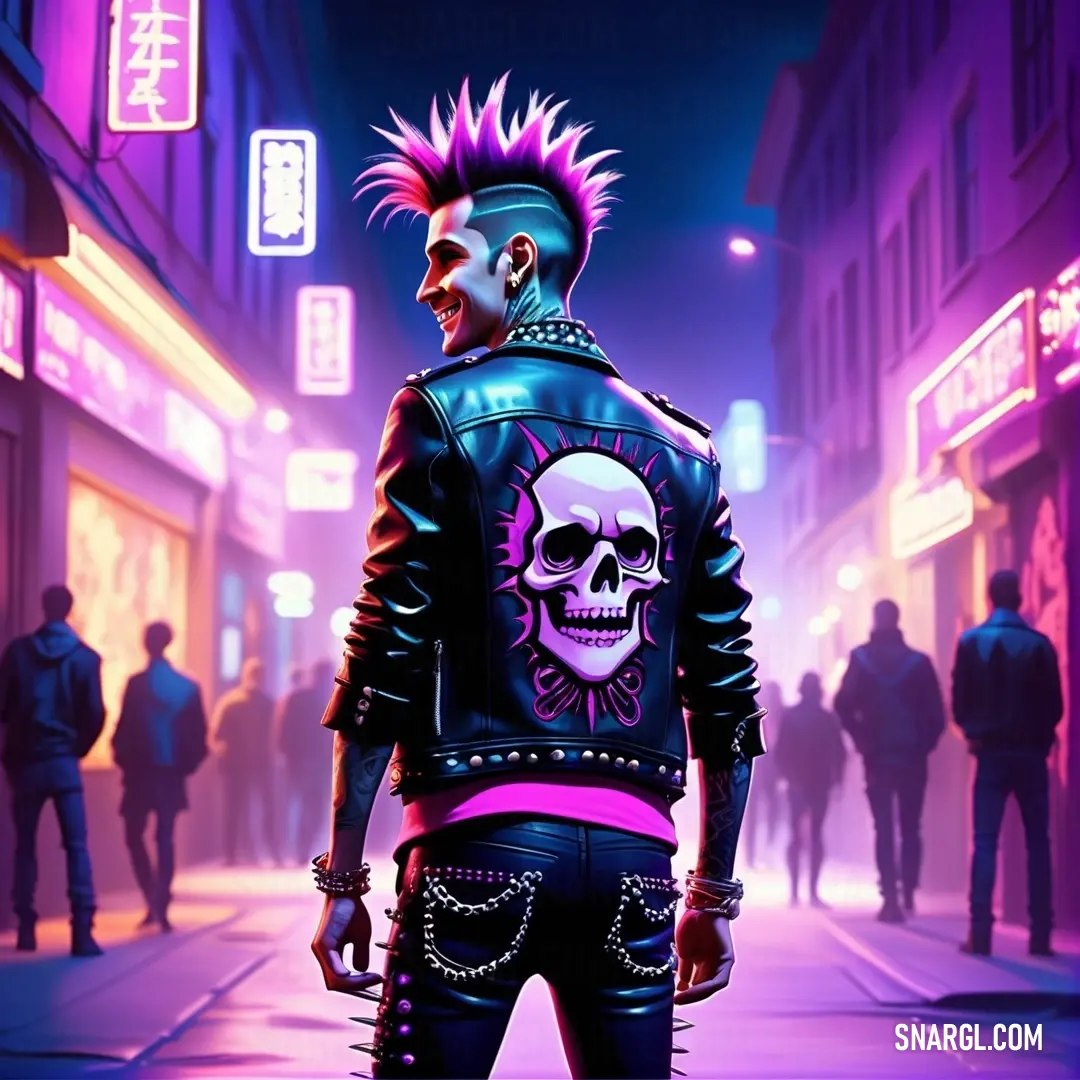
See these colors in NCS, PANTONE, RAL palettes...
What are the essential Punk Style clothing items and accessories?
There is no definitive list of essential punk clothing items and accessories, as punk fashion varies widely depending on the subculture, region, and personal preference of the wearer.
However, some common elements that can be found in many punk outfits are:
Leather jackets: Leather jackets are a staple of punk fashion, often adorned with spikes, studs, patches, pins, or paint.
They can be worn over any type of clothing, from T-shirts and jeans to dresses and skirts.
Leather jackets can also be customized to fit the style of different punk subgenres, such as glam punk, hardcore punk, or crust punk.Boots: Boots are another essential item for punk fashion, as they provide both comfort and protection.
They can be worn with any type of clothing, and can be decorated with laces, buckles, chains, or metal hardware.
Some popular brands of boots among punks are Dr.Martens, Converse, and Steel.Jeans: Jeans are a versatile and durable item of clothing that can be worn by punks of any gender or style.
They can be ripped, patched, bleached, dyed, or painted to create a unique look.
Jeans can also be worn with belts, suspenders, or chains for extra flair.T-shirts: T-shirts are a simple and effective way of expressing one's identity and affiliation in punk fashion.
They can feauture the logos, slogans, images, or artwork of bands, causes, or movements that the wearer supports or identifies with.
T-shirts can also be cut, torn, stretched, or altered to fit the wearer's body shape and style.Accessories: Accessories are a way of adding more personality and detail to one's punk outfit.
They can include jewellery, such as earrings, necklaces, bracelets, rings, or piercings; headwear, such as hats, caps, bandanas, or mohawks; gloves, scarves, or masks; bags, backpacks, or purses; or any other item that the wearer finds appealing or meaningful.
How to keep the Punk Style updated and fresh?
This style is not just about clothing, but also about music, art, politics, and lifestyle.
To keep the punk style updated and fresh, one can follow these tips:
Be creative and original.
Punk style is about individuality and authenticity, not following trends or copying others.
Experiment with different materials, colors, patterns, and accessories to create your own unique look.
You can also customize your clothes by adding patches, pins, studs, spikes, chains, or slogans.Be rebellious and provocative.
Punk style is about making a statement and confronting the status quo.
Don't be afraid to express your opinions and values through your style, whether it's anti-authoritarianism, anti-consumerism, or anti-establishment.
You can also use humor, irony, or satire to mock or criticize the dominant culture.Be DIY and resourceful.
Punk style is about making do with what you have and finding beauty in the discarded or damaged.
You can recycle, reuse, or repurpose old clothes, fabrics, or objects to create new pieces.
Make your own clothes, accessories, or art by sewing, knitting, crocheting, painting, or collage.Be inspired and informed.
Punk style is not static, but dynamic and evolving.
Learn from the history and diversity of punk subcultures, such as hardcore, glam, ska, grunge, emo, or pop punk.
Explore the current and emerging punk scenes, artists, and movements around the world.
You can also incorporate elements from other subcultures or genres that share punk values, such as hip hop, metal, goth, or rave.
By following these tips, you can keep the punk style updated and fresh, and express your true self.
What are the common mistakes or faux pas to avoid when dressing Punk Style?
Wearing band tees or buttons of bands you don't know or like.
This is considered poser behavior and can get you called out by other punks who are fans of those bands.
If you want to show your support for a band, make sure you actually listen to their music and know something about them.Buying expensive or brand-name clothes that are supposed to look punk.
Punk is anti-consumerist and anti-materialist, so spending a lot of money on clothes that are mass-produced and marketed as punk is contradictory to the punk ethos.
Instead, try to make your own clothes, customize thrifted or second-hand items, or trade with other punks.Trying too hard to fit into a specific subgenre of punk.
Punk is about being yourself and expressing your individuality, not conforming to a certain style or label.
There are many variations of punk, such as glam punk, pop punk, hardcore punk, etc., but you don't have to limit yourself to one of them.
You can mix and match elements from different styles, or create your own unique look.
The most important thing is to be authentic and comfortable with yourself.
How has the Punk Style changed or evolved over time?
Punk style was influenced by various artistic, philosophical, and literary movements, as well as by social and political issues of the time.
It was characterized by an aggressive, rebellious, and anti-establishment attitude, expressed through clothing, hairstyles, body modifications, and music.
Punk style has changed and evolved over time, as different regions, generations, and groups have adopted and adapted it to their own contexts and preferences.
Some of the main changes and evolutions of punk style are:
In the late 1970s and early 1980s, punk style became more diverse and experimental, as new subgenres of punk music emerged, such as new wave, post-punk, hardcore punk, and anarcho-punk.
Each subgenre had its own distinctive style, ranging from colorful and quirky to dark and militant.
Some of the influential bands and artists of this period were the Clash, the Ramones, Joy Division, Black Flag, and Crass.In the mid-1980s, punk style was influenced by the emergence of alternative rock, grunge, and indie music, which incorporated elements of punk with other genres, such as folk, pop, metal, and hip hop.
Some of the bands and artists that blended punk with other styles were R.E.M., Nirvana, Sonic Youth, Pixies, and Beastie Boys.In the late 1980s and early 1990s, punk style was revived by a new wave of bands and artists that embraced the DIY ethic and aesthetic of the original punk movement.
Some of the genres that emerged from this revival were pop punk, skate punk, emo, and riot grrrl.
Some of the bands and artists that represented this revival were Green Day, NOFX, Bikini Kill, Jawbreaker, and Blink-182.In the late 1990s and early 2000s, punk style was influenced by the rise of digital technology and globalization, which enabled more access and exposure to diverse cultures and music scenes.
Some of the genres that emerged from this influence were cyberpunk, steampunk, folk punk, and horror punk.
Some of the bands and artists that experimented with these genres were Nine Inch Nails, Rancid, Gogol Bordello, Misfits, and My Chemical Romance.In the 2010s and 2020s, punk style has continued to evolve and diversify, as new generations of bands and artists have emerged that draw inspiration from various sources and influences.
Some of the genres that have emerged or gained popularity in this period are post-punk revival, garage rock revival, noise rock, post-hardcore, and screamo.
Some of the bands and artists that have defined or redefined these genres are Arctic Monkeys, The Strokes, Death Grips, La Dispute, and Bring Me The Horizon.
Example of the color palette for the image of Punk Style

See these colors in NCS, PANTONE, RAL palettes...
What are the best tips and tricks for mastering Punk Style?
This style involves wearing bold, statement clothes that express your individuality and attitude.
Here are some tips and tricks for mastering punk style:
Choose your style.
There are different types of punk style, such as glam punk, pop punk, and hardcore punk.
Each one has its own aesthetic and influences.
For example, glam punk is inspired by David Bowie and features bright colors, glitter, spandex, leather, and leopard print.
Pop punk is influenced by bands like Green Day and Blink-182 and features skinny jeans, band tees, pyramid stud belts, and skater styles.
Hardcore punk is more minimalist and practical, favoring simple clothes that are safe to mosh in, such as plain t-shirts, baggy work pants, and combat boots.Master the basics.
Some common elements of punk style are black jeans, leather jackets, denim vests, band tees, stud belts, and combat boots.
Mix and match these items to create different outfits, depending on your mood and occasion.
You can also add some color and pattern to your look, such as red, pink, purple, plaid, tartan, or animal print.Hone your DIY skills.
Punk style is all about being creative and original, so don't be afraid to customize your clothes and accessories.
Use scissors, safety pins, patches, badges, paint, bleach, or studs to alter and personalize your items.
You can also make your own jewelry, such as earrings, necklaces, bracelets, or rings, using chains, spikes, buttons, or charms.Accessorize and hair.
To complete your punk style, you need to accessorize and style your hair.
Some popular accessories are sunglasses, hats, gloves, scarves, bandanas, chokers, cuffs, and piercings.
Experiment with different hairstyles, such as mohawks, spikes, mullets, dreadlocks, or shaved sides.
You can also dye your hair in vibrant colors, such as blue, green, pink, or purple.
How does the Punk Style fit with the music, art, or hobbies preferences?
It is not a fixed or uniform aesthetic, but rather a diverse and eclectic mix of influences, ranging from the glam rock and garage rock of the 1960s to the fetish and radical politics of the 1970s.
Punk style is often characterized by the following elements:
DIY and customization: Punk style is about making your own clothes, accessories, and body modifications, or altering existing ones to suit your personal taste and message. Punks often use safety pins, patches, badges, studs, spikes, chains, and other objects to decorate their clothing and express their identity.
Confrontation and provocation: Punk style is meant to challenge the norms and expectations of mainstream society, and to shock or offend those who conform to them. Punks often wear ripped, torn, dirty, or mismatched clothes, as well as provocative slogans, symbols, or images that reference sex, violence, drugs, or anarchy.
Simplicity and minimalism: Punk style is also a reaction against the excess and pretension of other musical genres and fashion trends. Punks prefer simple, basic, and functional clothes, such as T-shirts, jeans, leather jackets, and boots. Punks also favor short, unkempt, or shaved hairstyles over long or elaborate ones.
How does the Punk Style suit different seasons, occasions, or settings?
This style can suit different seasons, occasions, or settings depending on how it is expressed and adapted.
Here are some possible ways to rock the punk look in various contexts:
For a summer outfit, you can opt for a ripped denim jacket or vest, a band T-shirt, skinny jeans or shorts, and combat boots or sneakers.
You can also accessorize with sunglasses, spiked bracelets, or safety pins.
This will give you a casual and cool vibe that reflects your punk attitude.For a winter outfit, wear a leather jacket or coat, a plaid shirt, a sweater or hoodie, and warm pants or leggings.
And you can also wear a beanie, a scarf, or gloves to keep you cozy.
You will get a cozy and edgy look that will showcase your punk spirit.For a formal occasion, dress in a tailored suit or dress, but add some punk elements such as a studded belt, a necktie, or a brooch.
Wear a pair of sleek shoes or boots that contrast with your outfit.
It will give you a sophisticated and rebellious look that challenges the norms.For a casual occasion, you can mix and match different punk styles such as grunge, glam, or hardcore.
Wear a flannel shirt, a leather skirt, a fishnet top, or ripped leggings.
Experiment with different colors, patterns, and textures.
This will allow you a creative and eclectic look that expresses your punk personality.
You can choose to have a mohawk, a mullet, or dyed hair, and apply makeup such as eyeliner, lipstick, or nail polish.
And can also pierce your ears, nose, or lips, and get a tattoo on your arms, chest, or back.
These are some ways to enhance your punk style and make it more unique and personal.
Punk style is not fixed or rigid, but flexible and dynamic.
It can be adapted to your preferences and circumstances.
Or combine it with other styles such as goth, emo, or rockabilly.
Punk style is not about following rules, but about breaking them and making your own statement.
What are the past or classic trends or influences in Punk Style?
We were the rebels of the seventies
We wore leather jackets and ripped jeans
We pierced our ears, noses, and lips
We dyed our hair in bright colors and spikes
We rejected the mainstream and the elite
We created our own music and street art
We challenged the norms and the authority
We expressed ourselves with passion and anarchy
We were inspired by the glam rock and the garage bands
We admired the Stooges, the Ramones, and the Sex Pistols
We followed the designs of Vivienne Westwood and Malcolm McLaren
We shopped at their store, Sex, and wore their slogans
We were part of a movement that changed the world
We influenced the fashion, the culture, and the politics
We were more than just a style, we were a philosophy
We were punk, and we still are.
What are the current or upcoming trends or innovations in Punk Style?
This style has evolved over the decades, influenced by various subcultures, music genres, and political movements.
Some of the current or upcoming trends or innovations in punk style are:
Glam punk: This style is inspired by the flamboyant and androgynous look of bands like the New York Dolls and Iggy Pop and the Stooges.
It features glitter, makeup, bright colors, leather, and ripped clothing.
Glam punk is a way of challenging gender norms and conventional beauty standards.CBGB punk: This style is based on the simple and grungy look of the New York City bands that played at the iconic venue CBGB in the 1970s, such as the Ramones, Patti Smith, Blondie, and Television.
It consists of jeans, t-shirts, leather jackets, thrift store clothes, and Converse or Dr. Martens shoes.
CBGB punk is a reflection of the DIY ethos and anti-materialism of the punk scene.King's Road punk: This style is influenced by the provocative and controversial designs of Vivienne Westwood and Malcolm McLaren, who ran the shop SEX on London's King's Road in the 1970s.
It incorporates S&M fetish wear, sexually explicit and blasphemous t-shirts, outfits inspired by A Clockwork Orange, and accessories like spikes, studs, safety pins, and chains.
King's Road punk is a way of shocking and offending the mainstream society and expressing political and social critique.Anarcho punk: This style is associated with the anarchist and anti-war movements of the 1980s and beyond, and the bands that supported them, such as Crass, Conflict, and Subhumans.
It features black clothing, patches, badges, and slogans that promote peace, veganism, animal rights, feminism, and environmentalism.
Anarcho punk is a way of spreading awareness and activism through fashion.Street punk: This style is influenced by the working-class and urban culture of the 1980s and 1990s, and the bands that emerged from it, such as The Exploited, The Casualties, and Rancid.
It includes ripped clothing, band t-shirts, leather jackets, and DIY accessories.
Street punk is a way of expressing solidarity and identity with the punk community.
What are the future or potential trends or directions in Punk Style?
Some of the future or potential trends or directions in punk style are:
Glam punk: Inspired by the flamboyant and androgynous style of bands like the New York Dolls and Iggy Pop and the Stooges, glam punk combines glitter, leather, makeup, and bright colors to create a provocative and rebellious look.
CBGB punk: Named after the iconic New York City venue where bands like the Ramones, Blondie, and Television performed, CBGB punk is a simple and grungy style that features jeans, t-shirts, leather jackets, and thrift store clothes.
King's Road punk: Originated from the London shop SEX, run by Malcolm McLaren and Vivienne Westwood, King's Road punk is a radical and shocking style that incorporates ripped clothing, fetish wear, blasphemous and politically antagonistic slogans, and accessories like safety pins, studs, and spikes.
Anarcho punk: Associated with bands like Crass, Conflict, and Subhumans, anarcho punk is a political and ethical style that expresses anti-war, anti-capitalist, and anti-authoritarian views.
Anarcho punk often uses black clothing, DIY patches, badges, and symbols like the anarchy sign, the peace sign, and the circle-A.Street punk: Influenced by the working-class culture and the Oi! music genre, street punk is a tough and aggressive style that features plaid pants, combat boots, band t-shirts, leather jackets, and mohawks.
Street punk also incorporates elements from other subcultures, such as skinheads, greasers, and mods.
What are the best examples or role models of Punk Style in media or culture?
Some of the best examples or role models of punk style in media or culture are:
The Sex Pistols: The British band that ignited the punk movement in the mid-1970s, with their provocative lyrics, anarchic style, and controversial antics.
They wore ripped T-shirts, leather jackets, safety pins, chains, and spiked hair, often customized with slogans or band logos.
Their manager Malcolm McLaren and his partner Vivienne Westwood were influential in creating and popularizing their punk fashion.Debbie Harry: The lead singer of the American new wave band Blondie, who combined punk rock with pop sensibilities.
She had a distinctive blonde hairdo, often dyed with bright colors or shaved on one side, and wore tight jeans, leather jackets, miniskirts, and graphic tees.
Debbie Harry was a style icon for both men and women, and influenced many other musicians and celebrities.Siouxsie Sioux: The frontwoman of the British post-punk band Siouxsie and the Banshees, who experimented with different genres and aesthetics.
She had a striking appearance, with heavy eye makeup, pale skin, dark hair, and sharp features.
This singer wore fishnet stockings, leather corsets, PVC dresses, fur coats, and ethnic jewelry.
Siouxsie Sioux was a pioneer of the goth subculture and inspired many other artists and fashion designers.Henry Rollins: The vocalist of the American hardcore punk band Black Flag, who embodied the aggressive and confrontational spirit of the genre.
He had a muscular physique, covered with tattoos, and wore simple clothes, such as black shorts, T-shirts, and combat boots.
Henry Rollins was known for his intense performances, political activism, and spoken word shows.
He influenced many other musicians and actors in the punk scene and beyond.Joan Jett: The guitarist and singer of the American rock bands The Runaways and Joan Jett & the Blackhearts, who popularized the power chord-driven sound of punk rock.
This singer had a signature black shag haircut and wore leather pants, jackets, vests, and gloves.
Joan Jett was a feminist icon and a role model for female rockers.
She was also an animal rights activist and a vegan.


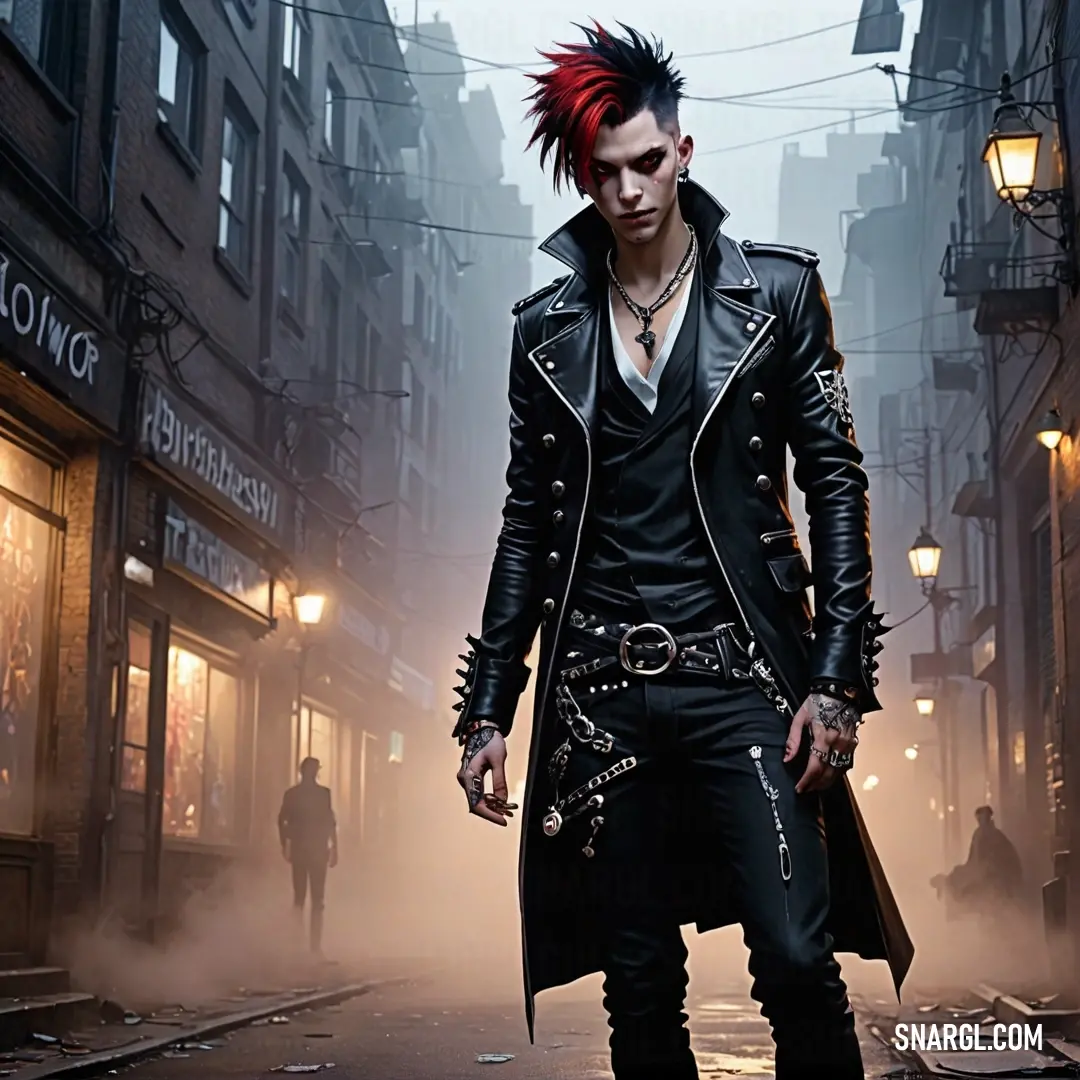

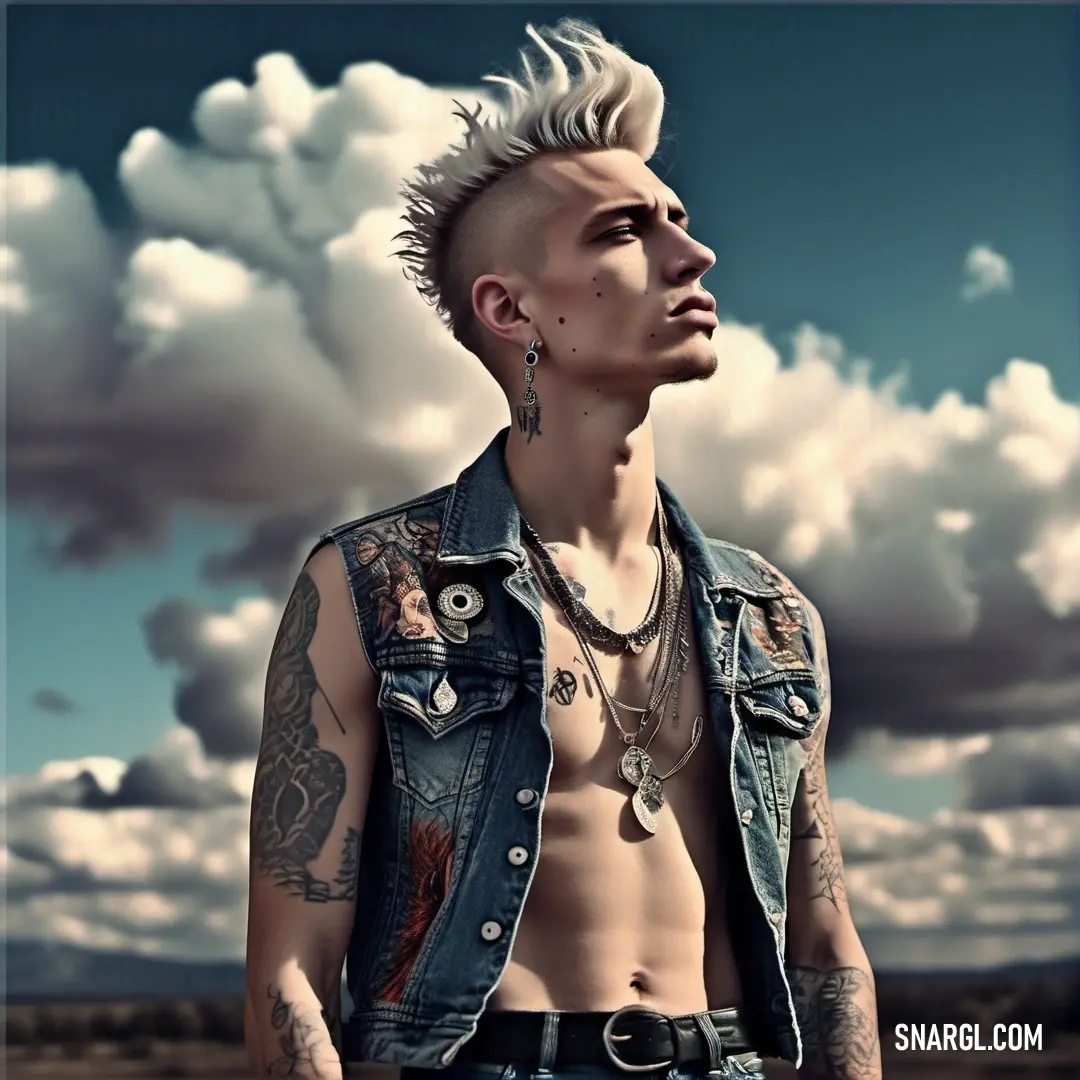
 Dark jungle green
Dark jungle green Cafe au lait
Cafe au lait Pale silver
Pale silver Dim gray
Dim gray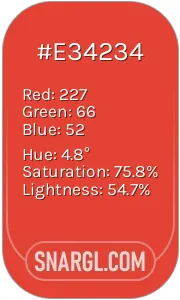 Cinnabar
Cinnabar



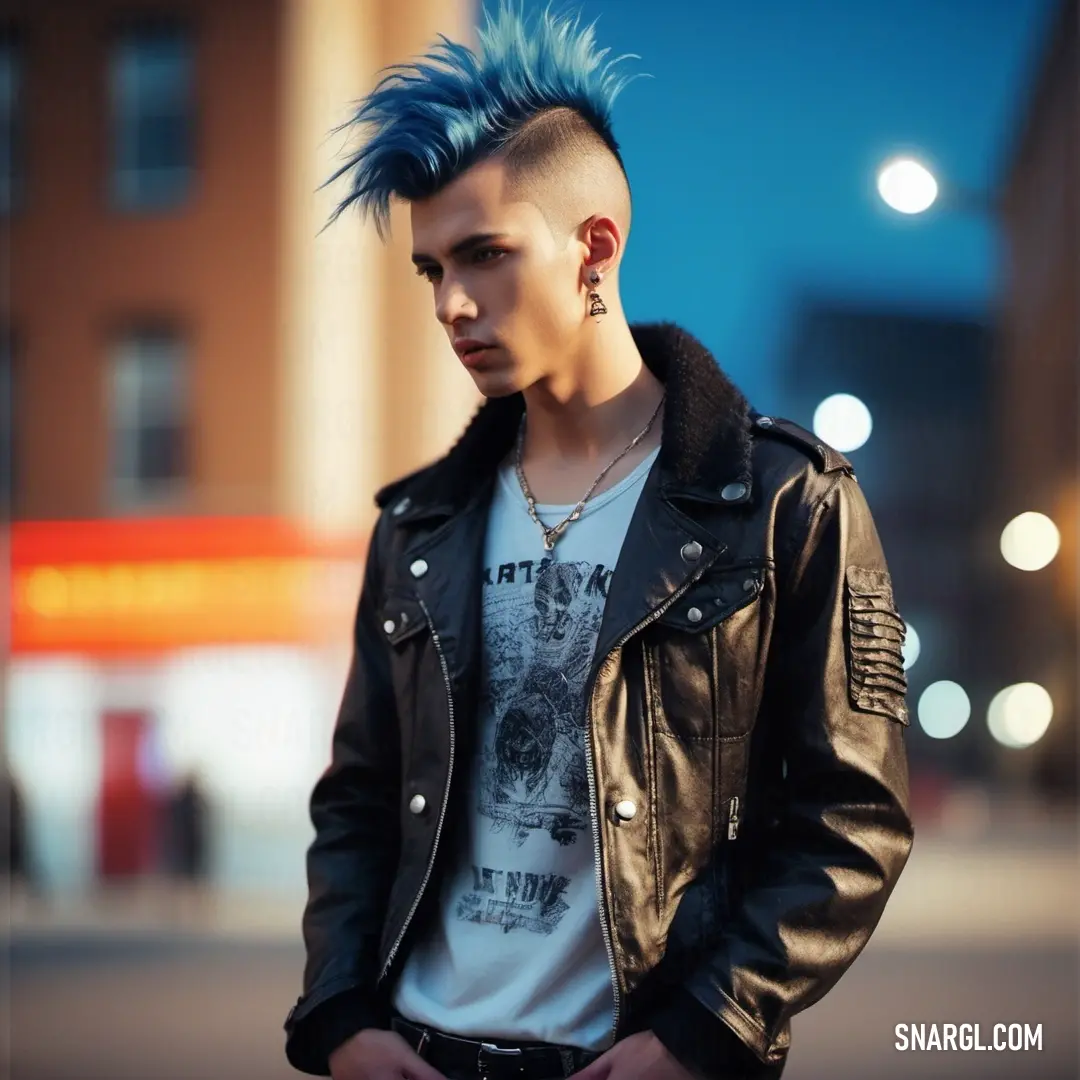


 Medium jungle green
Medium jungle green Pale chestnut
Pale chestnut Turkish rose
Turkish rose Cardinal
Cardinal Boysenberry
Boysenberry



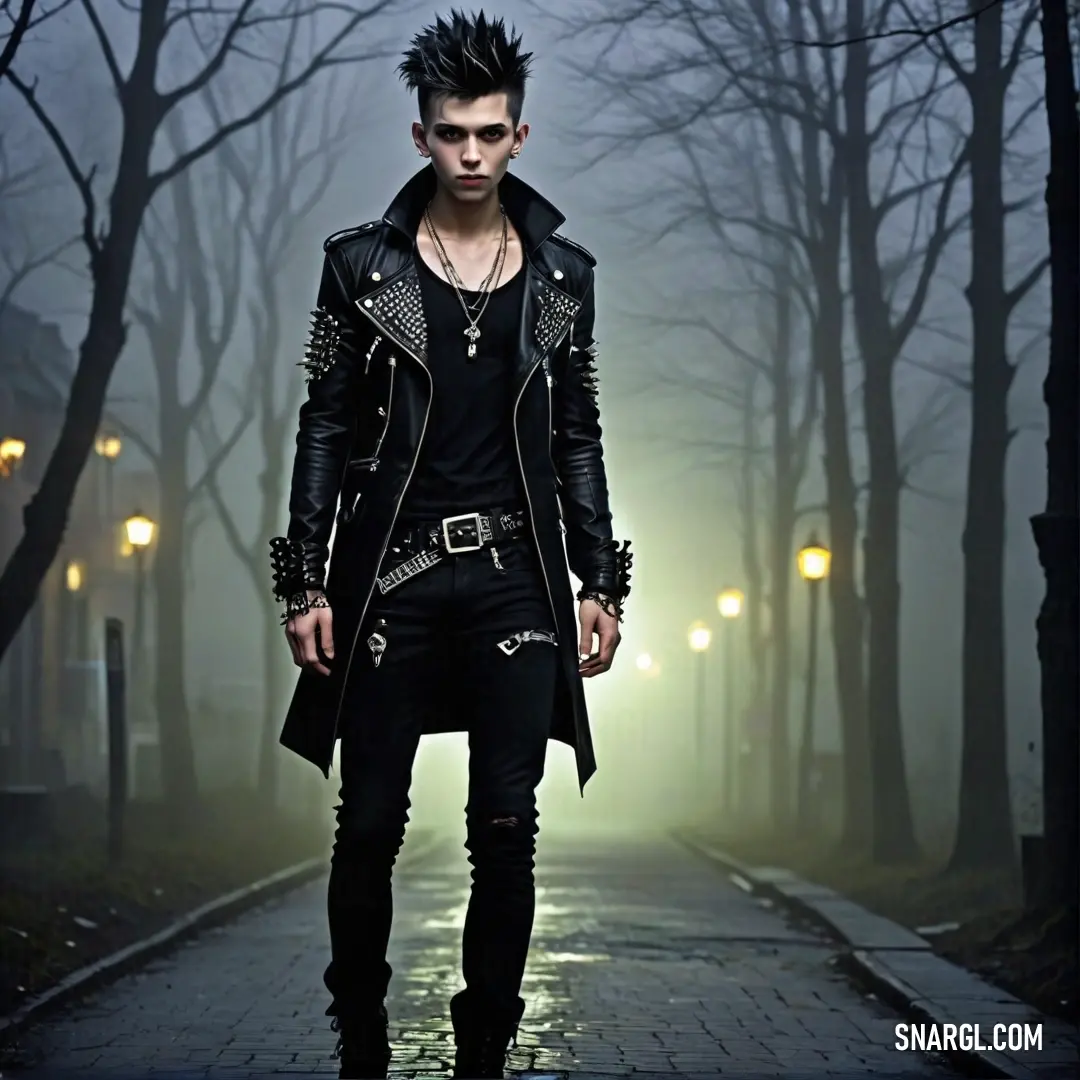
 UCLA Blue
UCLA Blue Glitter
Glitter Light salmon pink
Light salmon pink




 Outer Space
Outer Space Swamp green
Swamp green Nadeshiko pink
Nadeshiko pink Black
Black Lemon Yellow
Lemon Yellow



 Dark lava
Dark lava Ash grey
Ash grey Medium sea green
Medium sea green



 Cal Poly Pomona green
Cal Poly Pomona green Smoky black
Smoky black Snow
Snow Smokey topaz
Smokey topaz



 Onyx
Onyx Moonstone blue
Moonstone blue Pistachio
Pistachio Lapis lazuli
Lapis lazuli

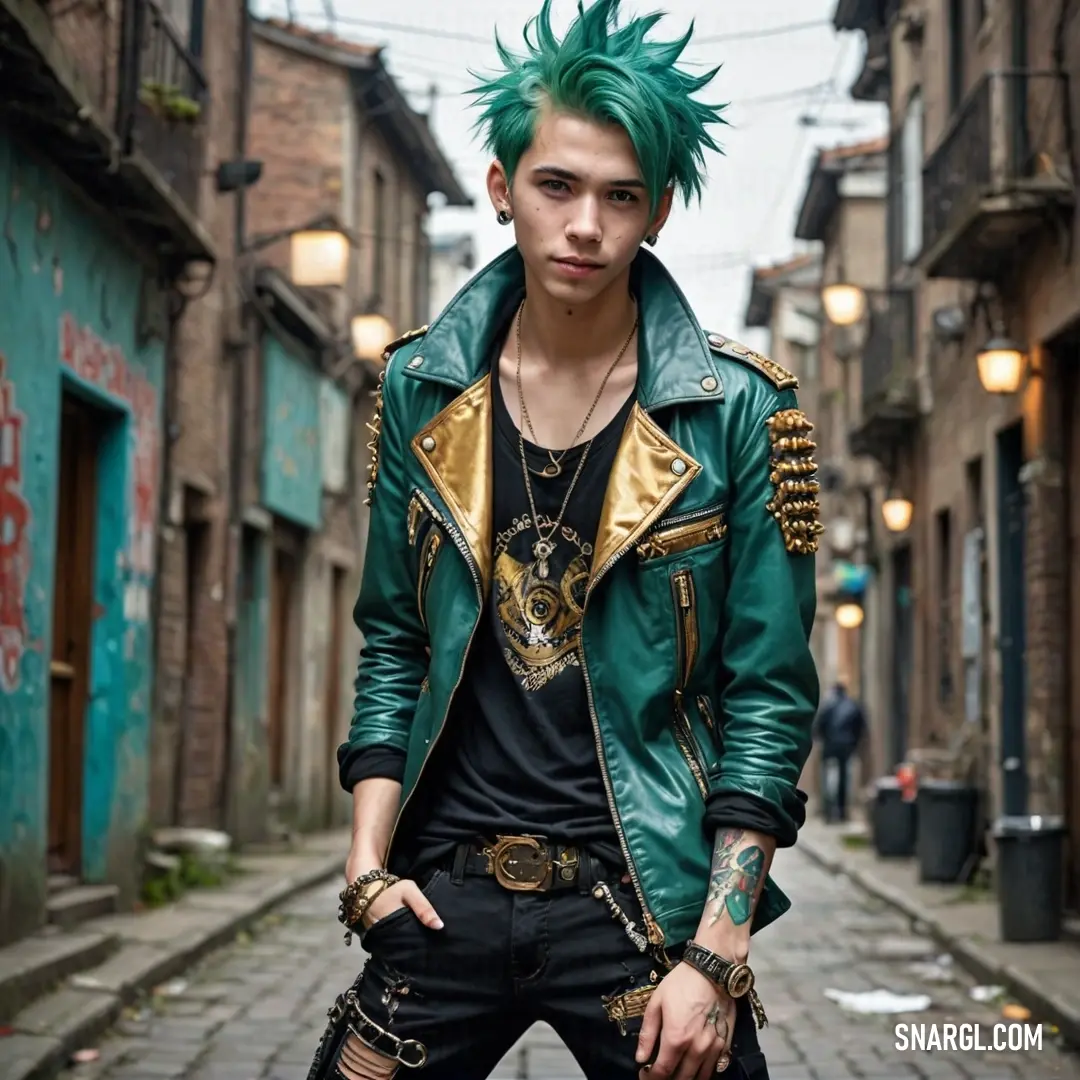




 Oxford Blue
Oxford Blue Medium lavender magenta
Medium lavender magenta Amethyst
Amethyst Persian blue
Persian blue UP Maroon
UP Maroon





 Tiffany Blue
Tiffany Blue Golden brown
Golden brown Dark spring green
Dark spring green Pale blue
Pale blue







